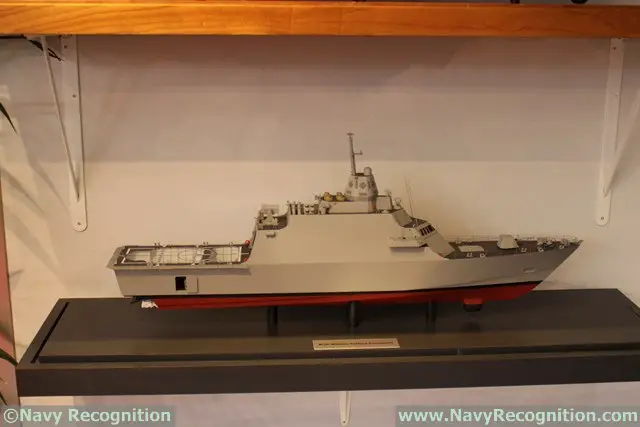Breaking news
Lockheed Martin offers several capable, flexible warship designs to navies worldwide.
| 2014
 |
|||
The SCS
structural design and open architecture combat system make it easily adaptable
to new and future technologies. This flexibility enables it to incorporate
own-country technologies into the SCS. It also offers ample flight deck
space to operate with multi-mission helicopters like the MH-60R and unmanned
aerial vehicles. Additionally, the SCS’ Aegis Weapon System, with
the SPY-1F radar, provides big navy capabilities in a smaller package.
Based on proven technologies, the SCS offers enhanced warfighting capabilities
and the ability to rapidly engage and defeat modern-day threats. The SCS will provide DDG-sized power in a small frigate-sized hull. Even the smallest navies can now have the ability to perform critical maritime security missions like protecting energy resources, providing shoreline and sea lane defense, and supporting allied coalition security requirements. Multi-mission Combat Ship (MCS): Lockheed Martin is building on its experience with the U.S. Navy’s littoral shipbuilding program to offer this next-generation capability to meet the maritime challenges facing today’s navies worldwide. By use of its dynamic hull design, performance and leading-edge technology to integrate system, sensor and weapons capabilities, Lockheed Martin’s Multi-mission Combat Ship (MCS) provides the necessary maritime security and war fighting prowess. As a fast, highly-maneuverable, shallow draft vessel that can execute missions in the open seas and coastal waters, the MCS provides a hull structure that suits many partner navy requirements. Current interest in the hull lengths range from 90 meters to 118 meters and displacement ranges from 1,600 tons to 3,600 tons. The ship’s hull form is proven from 67 meters to 150 meters at various displacements. With its hull design flexibility and open architecture combat management system, the MCS aligns with many partner navies’ preference for multi-mission, fixed combat systems with the flexibility to allocate reconfigurable space for use with modular and unmanned systems. The ship’s adaptable design enables partner navies to insert fixed multi-mission or modular systems, including vertical launchers and surface-to-surface missile canisters, without major structural impact. It is also cost-effective to build, customize and maintain as it’s based on a producible and affordable design that already meets U.S. Navy standards. The MCS is able to conduct naval maritime missions focused on increasing global security, including surveillance and intelligence-gathering, patrolling territorial waters, and enforcing economic exclusion zones. The ship features endurance and habitability for extended operations. Its large aviation flight deck and hangar for manned and unmanned platforms supports dual air vehicle operations. Its waterborne mission zone with a reconfigurable space supports safe and expedient launch and recovery of multiple rigid-hull inflatable boat operations and unmanned vehicle use. This combination of inherent capability is well-suited for supporting counterterrorism activities, anti-piracy missions, special operations missions, maritime interdiction, and humanitarian relief operations. With its intelligence, surveillance and reconnaissance (ISR) capability, the MCS can also share its sensor data as part of a larger, national network that maintains a common operational picture ashore. This naval ISR ability strengthens the coordination of the nation’s operating forces. Its command and decision system can integrate data from remote sensors, linked helicopters, friendly naval vessels, and shore based command centers. Although the sensor, weapon and operational capabilities of a single ship are important, its ability to accurately and quickly share information to make decisions is the best way to ensure success in modern naval operations. It also will allow interoperability with U.S. and allied naval forces in joint operations. To deter and interdict when necessary, the ship’s combat system is scaled from Aegis open architecture, which is proven and in use globally on more than 100 ships in six navies. With its battle-tested lineage, the ships can be equipped to meet a variety of missions including anti-air, mine countermeasures, anti-surface, anti-submarine and electronic warfare. Navies can configure the ships to meet requirements by tailoring systems and automation with integrated sensors and weapons serves to best match their specific threats. As naval forces worldwide look to the future, they see significant potential for instability and dynamic challenges to sovereign maritime security, including territorial boundaries and international commerce. That’s what the Lockheed Martin MCS and SCS can bring – an effective solution to meet those challenges today, while providing the capability for adaptation in the future to ensure the security of the seas. |
|||



























